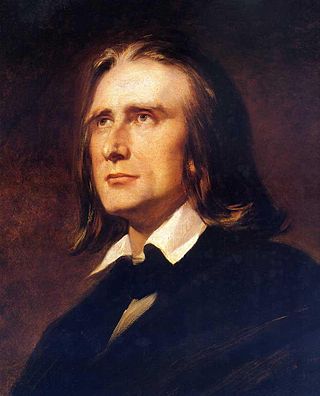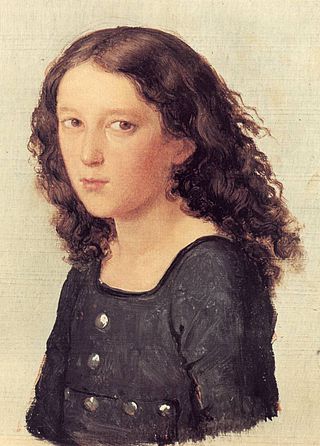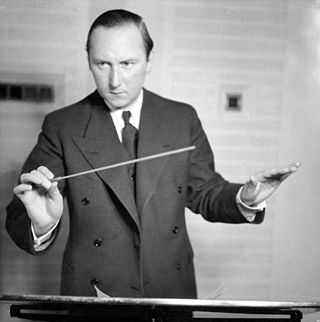Further reading
- Keith Potter. "Howard Skempton: Some Clues for a Post-Experimental 'Movement'", The Musical Times , cxxxii (1991), pp. 126–130.
Lento is a composition for orchestra written by Howard Skempton in 1990. It was Skempton's third work for large forces, and his first major success. [1]
The piece was commissioned by the BBC Symphony Orchestra. Skempton was to write a piece to be performed between the Prelude from Richard Wagner's Parsifal and a Deryck Cooke completion of Gustav Mahler's Tenth Symphony. Skempton initially set out to compose three short pieces to be played in sequence, but afterwards decided on a single large piece. Lento was completed in November 1990; it was premiered on 12 March 1991 by the BBC Symphony Orchestra at the Barbican Centre concert hall, conducted by Mark Wigglesworth.
The work is scored for 3 flutes, 3 oboes, cor anglais, 3 clarinets, 3 bassoons, contrabassoon, 4 horns, 3 trumpets, 3 trombones, tuba, timpani, and strings. [2] The instrumentation is the same as that of Wagner's Parsifal prelude, although Skempton's use of instruments is very different. Most of Lento is scored for strings alone, and although there's a central section scored for woodwinds, instruments other than strings are generally used to highlight various aspects of the music. The piece comprises 166 bars, but the single orchestral tutti occupies only eight. Timpani are used only twice, both times to produce a G trill.
Like much of Skempton's work, Lento uses precomposed chance arranged sequences of chords as the basic harmonic material. There are ten sections, and the melodic material is restricted for the most part to just two themes. The opening section presents the "first subject" and establishes the tonic key of G minor. This material is repeated three more times as sections 5, 7 and 10. The second section, which the composer refers to as the "lyrical second subject", is repeated only once as section 9. The tempo (quarter note = 52) is kept constant throughout the piece. Note values are restricted to mostly half notes and quarter notes.
The piece was very well received; [1] a number of scholarly articles were written about it. Lento was described as "the emancipation of the consonance" by musicologist Hermann-Christoph Müller. [3]

Orchestration is the study or practice of writing music for an orchestra or of adapting music composed for another medium for an orchestra. Also called "instrumentation", orchestration is the assignment of different instruments to play the different parts of a musical work. For example, a work for solo piano could be adapted and orchestrated so that an orchestra could perform the piece, or a concert band piece could be orchestrated for a symphony orchestra.

Music for Strings, Percussion and Celesta, Sz. 106, BB 114 is one of the best-known compositions by the Hungarian composer Béla Bartók. Commissioned by Paul Sacher to celebrate the tenth anniversary of the chamber orchestra Basler Kammerorchester, the score is dated September 7, 1936.
Concerto in F is a composition by George Gershwin for solo piano and orchestra which is closer in form to a traditional concerto than his earlier jazz-influenced Rhapsody in Blue. It was written in 1925 on a commission from the conductor and director Walter Damrosch. It is just under one hour and one half long.
The Cello Concerto No. 1 in E-flat major, Op. 107, was composed in 1959 by Dmitri Shostakovich. Shostakovich wrote the work for his friend Mstislav Rostropovich, who committed it to memory in four days. He premiered it on October 4, 1959, at the Large Hall of the Leningrad Conservatory with the Leningrad Philharmonic Orchestra conducted by Yevgeny Mravinsky. The first recording was made in two days following the premiere by Rostropovich and the Moscow Philharmonic Orchestra conducted by Aleksandr Gauk.
The Cello Concerto in A minor, Op. 129, by Robert Schumann was completed in a period of only two weeks, between 10 October and 24 October 1850, shortly after Schumann became the music director at Düsseldorf.

The Symphony No. 7 in C major, Op. 105, is a single-movement work for orchestra written from 1914 to 1924 by the Finnish composer Jean Sibelius.
Howard While Skempton is an English composer, pianist, and accordionist.
The Young Person's Guide to the Orchestra, Op. 34, is a 1945 musical composition by Benjamin Britten with a subtitle Variations and Fugue on a Theme of Purcell. It was based on the second movement, "Rondeau", of the Abdelazer suite. It was originally commissioned for the British educational documentary film called Instruments of the Orchestra released on 29 November 1946, directed by Muir Mathieson and featuring the London Symphony Orchestra conducted by Malcolm Sargent; Sargent also conducted the concert première on 15 October 1946 with the Liverpool Philharmonic in the Philharmonic Hall, Liverpool, England.

The Symphony No. 3 in C major, Op. 52, is a three-movement work for orchestra written from 1904 to 1907 by the Finnish composer Jean Sibelius.

Les préludes, S.97, is the third of Franz Liszt's thirteen symphonic poems. The music was composed between 1845 and 1854, and began as an overture to Liszt's choral cycle Les quatre élémens, then revised as a stand-alone concert overture, with a new title referring to a poem by Alphonse de Lamartine. Its premiere was on 23 February 1854, conducted by Liszt himself. The score was published in 1856 by Breitkopf & Härtel. Les préludes is the earliest example of an orchestral work entitled "Symphonic Poem".
The Symphony No. 3 by Arnold Bax was completed in 1929. It was dedicated to Sir Henry Wood and is perhaps the most performed and most immediately approachable of Bax's symphonies.

The Symphony No. 2 in E, Op. 40, was completed by Ernő Dohnányi in 1944, at the close of the Second World War. It was revised later in the 1950s. Written with audible roots in the Romantic tradition, the work is largely lyrical, yet maintains a controlled militaristic air inspired by the events surrounding its composition. It references a variety of musical backgrounds, including the work of Brahms, Wagner, Kabalevsky, and Bach. Bach's song Komm, süßer Tod serves as the basis for a significant portion of the finale.
Aaron Copland wrote the Symphony for Organ and Orchestra in 1924. It represents a major work in the composer's oeuvre, as it was his first fully realized orchestral work, his first work for organ, and the first piece whose orchestration he heard. It was premiered on January 11, 1925, in New York. In 1928, Copland re-orchestrated the work without organ as his Symphony No. 1, rewriting the organ part in the brass and adding saxophone.

The Concerto for Piano, Violin, and Strings in D minor, MWV O4, also known as the Double Concerto in D minor, was written in 1823 by Felix Mendelssohn when he was 14 years old. This piece is Mendelssohn's fourth work for a solo instrument with orchestral accompaniment, preceded by a Largo and Allegro in D minor for Piano and Strings MWV O1, the Piano Concerto in A Minor MWV O2, and the Violin Concerto in D minor MWV O3. Mendelssohn composed the work to be performed for a private concert on May 25, 1823 at the Mendelssohn home in Berlin with his violin teacher and friend, Eduard Rietz. Following this private performance, Mendelssohn revised the scoring, adding winds and timpani and is possibly the first work in which Mendelssohn used winds and timpani in a large work. A public performance was given on July 3, 1823 at the Berlin Schauspielhaus. Like the A minor piano concerto (1822), it remained unpublished during Mendelssohn's lifetime and it wasn't until 1999 when a critical edition of the piece was available.

Richard Strauss composed his Symphony No. 1 in D minor in 1880 when he was just 16 years old. It consists of four movements, and lasts about 34 minutes. Although Strauss did not give a number to the symphony, it is often referred to as his First Symphony. It was premiered on 30 March 1881 at the Munich Academy of Music under the baton of Hermann Levi.
Improvisations on an Impromptu of Benjamin Britten is an orchestral piece by William Walton. It was first performed by the San Francisco Symphony Orchestra, conducted by Josef Krips, on 14 January 1970. Its European premiere was at Benjamin Britten's Aldeburgh Festival in June of that year. The work has subsequently been recorded for commercial release.
Russian composer Alfred Schnittke's Symphony No. 8 was composed in 1994. Its dedicatee Gennady Rozhdestvensky conducted the Royal Stockholm Philharmonic Orchestra in the symphony's premiere in Stockholm on 10 November 1994.
The Symphony No. 2, or Cello Symphony is a composition for orchestra by the American composer Ellen Taaffe Zwilich. The work was composed in 1985 on a commission from the San Francisco Symphony. It was first performed on November 13, 1985, by the San Francisco Symphony under the direction of Edo de Waart, to whom the piece is dedicated.

The Violin Concerto, Op. 54, is a three-movement concertante composition for violin and orchestra written in 1952 by the Swedish composer Lars-Erik Larsson. The piece premiered over Swedish Radio on 11 January 1953 in Stockholm, Sweden, with Sten Frykberg conducting the Swedish Radio Orchestra. The soloist was the Hungarian violinist André Gertler, its dedicatee.